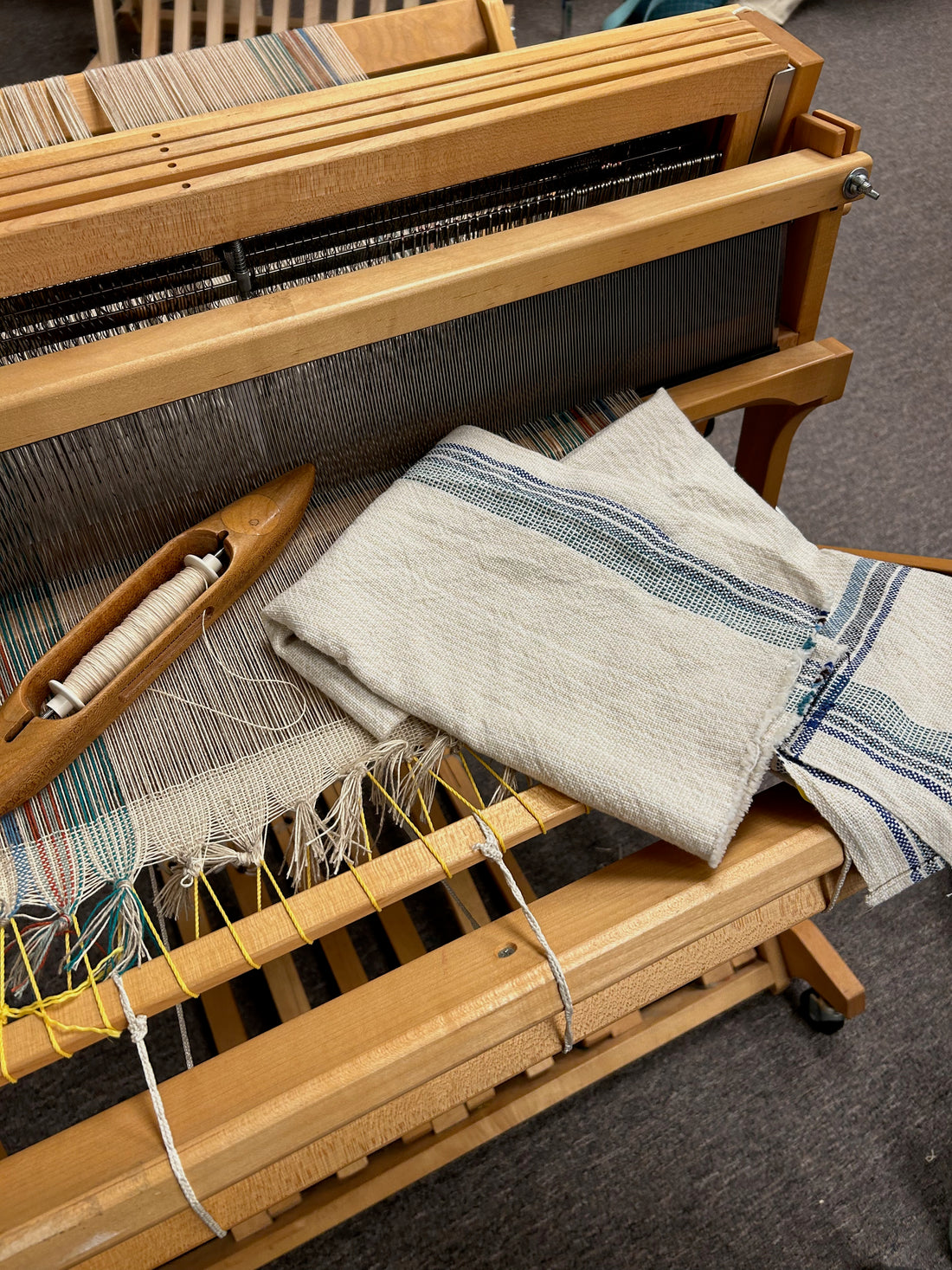Learning to weave on a floor loom can be a complicated task.
Floor looms are expensive. Floor looms can’t be carried around like other more portable fiber arts tools, such as knitting needles, crochet tools, spinning wheels, spindles, needlepoint and embroidery tools and so on and so forth. It’s hard to get together with friends for a night of floor loom weaving.
Therefore many weavers who find themselves in the possession of a floor loom, are left to learn the process on their own.
With the advent of the internet and Youtube, learning to weave has become more accessible, yet still inaccessible for many as having space for a loom, knowing which one to buy, and financing a floor loom is overwhelming and stifling.
The Philadelphia Guild of Handweavers started as a weaving guild in 1952 when a group of weavers in the Philadelphia area began to meet to foster their craft. Through education and the exchange of ideas, they hoped to inspire others to greater proficiency as weavers.
Our guild is still teaching weaving on floor looms and by reintroducing a program, Walk in and Weave we hope to entice new weavers to check out the fun and fiberly love that can be had weaving on a floor loom.

I’ve been weaving on a floor loom since I learned how in college, back in the early 1980’s. The interaction of color, the clackity-clack of the loom as the fabric is created between the sheds has always fascinated me. I love experimenting with structure, design and the use of the cloth once it is off the loom. I rarely weave any design twice and you will rarely find me weaving scarves, as I get bored halfway through weaving the length and want to move on to learning something new.
I love sharing the joy of weaving with others and finally offered to teach beginning weaving at the guild so I could share that love.
It wasn’t a smooth transition. Teaching weaving is complicated. Warping a loom can be complex and intimidating to someone not familiar with the workings of these seemingly medieval tools.
And like so many things fiber related, there are many ways to accomplish one goal. So how do we teach a method that can be expanded on when there are so many ideas and ways to get all those tiny threads lined up, with succinct tension, ready to accept the weft that will create the fabric?
Experimentation, of course…
After teaching beginning weaving for 3 - 6 week sessions, I had students who could give me constructive feedback as to how they learn, want to continue to learn and are willing to move forward in their floor loom experiment.
The only way our guild has found to teach beginning weavers is experientially - by getting them on the loom fast. But students rarely have an understanding of WHY the process is so lengthy until they actually sit and weave.
So our idea is by introducing a student to the weaving first, we are reversing the teaching to show the end result, the woven cloth first, hence teaching backwards.
By giving this experience, we can assess that if there is interest in sitting at the loom and weaving, then we can begin to teach the entire process. The designing, math, drafting, winding, dressing the loom, warping then weaving that initially seems complicated, is more approachable when the student sees the end result first! Context is important!

I connected a few students with used looms that are offered through members at our guild. I listened and offered help to these students when they asked for assistance.
But it wasn’t until one student came to me, asking to learn everything I knew and offering her help so we could learn together, that we navigated the complexity of weaving and have hopefully segued to a more simple learning experience.
The idea of warping looms by myself to teach Walk in and Weave was overwhelming. I am a fast warper but doing it alone isn’t always fun and wasn’t something I was willing to do. And I would have to do it at the guild house where the looms live.
My student, now friend, offered to help. She wanted to learn to warp and knew that by practicing and making mistakes, we could both learn together how to more effectively teach.
And that’s what we did. Together, we designed a simple towel that was easy to weave for a beginner and had a little bit of color. Adding color takes time and that was something we were trying to keep to a bare minimum.
We warped six looms for our first Walk in and Weave class. It took us about 4-5 hours of deciding the “best” method for warping the looms. We tied on to an existing warp, we warped front to back and back to front, finally settling on a speed warping system that got us wound on the loom in 15 minutes, leaving the threading and tie on to take another 45 or so minutes for each loom. The entire process from winding the warp to weaving a header we got to around 3 hours. It is so far proving to be effective.
Our class sold out. But now that the looms are warped, we hope to introduce weaving to a bigger crowd. Allowing students to simply weave without the frustration of warping. This gets people on the looms, giving them experiential exposure to a skill that has been around for centuries.
Our hope is this program will feed students into our weaving program, exposing future generations to the art, color and love of weaving that can then open many doors to so many expressions of our artistic selves.
So stay tuned and check out this calendar for upcoming classes!
Melissa Terrels is a weaving and sewing teacher at Philadelphia Guild of Handweavers.

